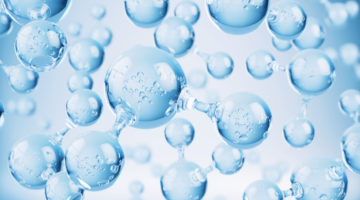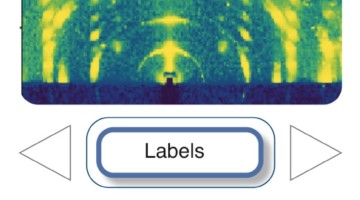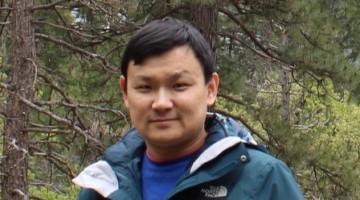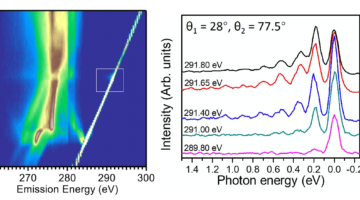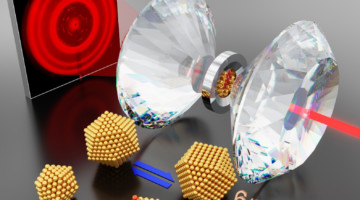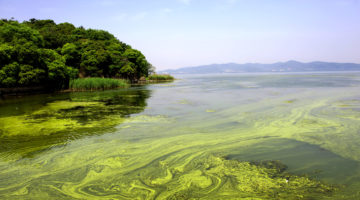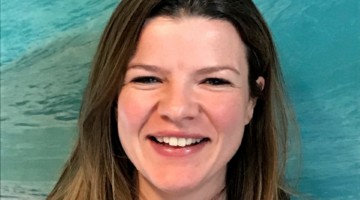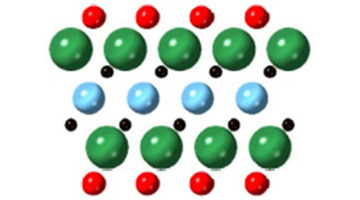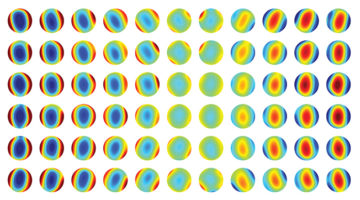A promising solution to water pollution from abandoned copper mines relies on materials that adsorb copper ions from wastewater, but commercially available products lack the required chemical specificity and load capacity. A team of scientists has designed a new crystalline material that targets and traps copper ions from wastewater with unprecedented precision and speed. Read more »
ALS and Molecular Foundry Funded to Lead the Development of New Artificial Intelligence and Machine Learning Tools
DOE recently awarded a combined $8.55 million to two Berkeley Lab-led teams to build new tools that harness the power of artificial intelligence and machine learning. Synchrotron and nanoscience users will benefit from Alex Hexemer’s MLExchange and Andrew Minor’s 4D Camera Distillery, both multidisciplinary projects involving multiple national labs. Read more »
Yang Ha, Chemistry and Materials Postdoc
Synchrotron science is in Yang Ha’s DNA. After getting his PhD from Stanford/SSRL, he joined the ALS in 2018 to study batteries and has branched out to theoretical computation and machine learning. He has also learned useful skills for sharing cutting-edge research with a broader audience. Read more »
Detecting Phonon Overtones in Correlated Materials
Resonant inelastic x-ray scattering (RIXS) has recently been shown to be a promising technique for studying electron–phonon coupling in correlated materials. When a photoexcited electron interacts with phonons during decay, it shows up in the RIXS spectra as clear phonon overtones: higher-order excitations that appear as ripples in intensity. Read more »
Stress-Induced Structural Transformations in Gold Nanocrystals
Metallic nanocrystals are widely used in catalysis, electronics, photonics, and sensing applications, but our understanding of their stability under operational stresses is limited. These studies of gold nanocrystals at high pressures found that large-scale structural transformation is possible and must be considered at the nanoscale. Read more »
Study Finds ‘Missing Link’ in the Evolutionary History of Carbon-Fixing Protein Rubisco
Scientists discovered an ancient form of rubisco, the most abundant enzyme on Earth and critical to life as we know it. Found in previously unknown environmental microbes, the newly identified rubisco provides insight into the evolution of the photosynthetic organisms that underlie the planet’s food chains. Read more »
Sophie Morley, Research Scientist
Sophie Morley became an ALS staff member this July but started coming to the ALS as a user in 2012. Sophie likes to surf and mountain bike, but read more to find out what she really considers to be her playground. Read more »
Understanding Electronic Structure in MXenes, One Atomic Layer at a Time
MXenes are 2D materials that can host a rich array of distinct chemical compositions that can be tuned for a broad range of applications, from energy storage to water purification. Site-specific x-ray absorption spectroscopy helped identify the unique roles of surface and subsurface transition-metal atoms in Ti-based MXenes. Read more »
Characterization of EUV Optics using Intrinsic Mask Roughness
Researchers developed an in situ computational technique for measuring aberrations in EUV optics, taking advantage of the surface roughness of photomasks used to transfer circuit patterns onto chips. The technique will prove increasingly valuable in the characterization of coherent light sources and beamline optical systems. Read more »
2020 ALS User Meeting Highlights
An experiment born of necessity, the 2020 ALS User Meeting was held August 25–28, “in silico.” The results have been generally positive, revealing emergent benefits to interactions occurring in the virtual realm, even as we hope for a return to real space ASAP. Read more »
- « Previous Page
- 1
- …
- 19
- 20
- 21
- 22
- 23
- …
- 28
- Next Page »
